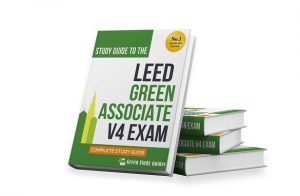Prepare for Your LEED AP ID+C exam
A well planned LEED AP ID+C exam preparation will help you achieve a good score in the LEED AP Interior Design + Construction Exam. The credential serves participants in the design, construction and improvement of commercial interiors and tenant spaces that offer a healthy, sustainable and productive work environment.
Candidates who have already passed the LEED Green Associate Exam can register for the specialty-only portion of the exam (LEED AP ID+C), and do not need to sit for the entire composite exam.
Download LEED GA Exam Preparation Guide
If you are planning to take LEED Green Associate Exam and LEED AP ID+C exam together, be prepared to spend 4 hours and 20 minutes to the entire process. Total exam time is broken out as follows: an optional 10 minute tutorial, the 2-hour LEED Green Associate exam, the 2-hour specialty exam, and an optional 10-minute exit survey.
Task Domains and LEED AP ID+C Knowledge Domains
The Interior Design + Construction specialty exam is based on the following text specifications and references. The exam questions reflect Task Domains and Knowledge Domains.
View LEED AP ID+C Task Domains for the Exam Prep
Task Domains reflect the tasks necessary to perform LEED safely and effectively. These include concepts such as LEED Project and Team Coordination, LEED Certification Process, Analyses Required for LEED Credits, and Advocacy and Education for Adoption for LEED Rating System.
LEED Project and Team Coordination (25%)
LEED Certification Process (25%)
Analyses Required for LEED Credits (35%)
Advocacy and Education for Adoption for LEED Rating System (15%)
Knowledge Domains reflect the rating systems’ credit categories and what one needs to know.These include concepts such as LEED Process, Integrative Strategies, LEED credit categories, and Project Surroundings and Public Outreach.
View Knowledge Domains for LEED AP ID+C Exam Prep 2020
LEED Process (11 questions)
Integrative Strategies (8 questions)
Location and Transportation (8 questions)
Water Efficiency (10 questions)
Energy and Atmosphere (15 questions)
Materials and Resources (17 questions)
Indoor Environmental Quality (16 questions)
DOWNLOAD LEED AP with Specialty Candidate Handbook 2020
LEED AP ID+C Exam Prep and Exam Sample Questions
These ten LEED AP ID+ C exam sample questions are provided for your convenience to allow you to better familiarize yourself with the format and general content of items on the exam. Correct answers with explanations are given under each question.
1. After the owner documents their owner’s project requirements (OPR), the project team will take that document to create the basis of design (BOD). What would be contained in the BOD?
A. Energy efficiency goals, number of occupants, building schedule
B. Systems and assemblies, governing codes and standards, performance criteria and assumptions
C. Functional testing, training requirements, issue resolution process
D. Operating mode tests, sustainability goals, occupant functions
Answer: B. Systems and assemblies, governing codes and standards, performance criteria and assumptions
2. After the owner documents their owner’s project requirements (OPR), the project team will take that document to create the basis of design (BOD). What would be contained in the BOD?
A. Systems and assemblies, governing codes and standards, performance criteria and assumptions
B. Operating mode tests, sustainability goals, occupant functions
C. Energy efficiency goals, number of occupants, building schedule
D. Functional testing, training requirements, issue resolution process
Answer: A. Systems and assemblies, governing codes and standards, performance criteria and assumptions
3. All EXCEPT which documentation can be used to report the material ingredients of a product to at least 0.1% (1000 ppm)?
A. Health product declarations (HPD)
B. Type III EPD
C. Manufacturer inventory
D. Cradle-to-Cradle analysis
Answer: B. Type III EPD. EPDs are not for material ingredient reporting.
4. The architect and other project designers are reviewing material choices for a new office space. Which reused materials will NOT contribute to optimization of MR Credit Building Product Disclosure and Optimization – Sourcing of Raw Materials?
A. Furniture that has been leased for 1-year
B. Cabinets
C. Beams
D. Decorative items
Answer: A. Furniture that has been leased for 1-year in the case of an owner moving to a new site furniture that is leased must have been in service for 2-years to count in the current project.
5. As an alternative refrigerant to HCFC a project team is considering HFC-410A. What is the trade-off to when using HFC-410A in the HVAC&R system?
A. It has a higher GWP than HCFC
B. It has a high flammability
C. It has a lower refrigerant charge
D. May require more energy to achieve the same level of cooling as HCFC
Answer: D. May require more energy to achieve the same level of cooling as HCFC. It has a lower GWP but require more energy to achieve the same level of cooling.
6. At a minimum what must be analyzed for IP Credit Integrative Process for ID+C projects?
A. Energy-related and water-related systems only
B. Energy-related systems only
C. Site selection and energy-related systems only
D. Site selection, energy-related systems, and water-related systems
Answer: C. Site selection and energy-related systems only Site and energy are required and can earn one point, water earns one additional point.
7. At a minimum what must be analyzed for IP Credit Integrative Process for ID+C projects?
A. Site selection, energy-related systems, and water-related systems
B. Site selection and energy-related systems only
C. Energy-related systems only
D. Energy-related and water-related systems only
Answer: B. Site selection and energy-related systems only. Site and energy are required and can earn one point, water earns one additional point.
8. At which point during a project schedule is the Basis of Design created?
A. During pre-design phase
B. At the Cx kickoff meeting
C. The same time the Cx report is created
D. During the schematic-design phase
Answer: D. During the schematic-design phase
9. At which point in a project’s schedule must the commissioning authority be engaged?
A. By the end of the design-development phase
B. By the end of the schematic-design phase
C. During the pre-design phase
D. Prior to completion of the Basis of Design (BOD)
Answer: A. By the end of the design-development phase. The prerequisite requires engagement by the end of the design development phase.
10. Before construction documents are written for an office project, the project team makes some design modifications as a result of value engineering. Who will be responsible for updating the Owner’s Project Requirements?
A. The owner(s)
B. The design team
C. The architect(s)
D. The CxA
Answer: A. The owner(s)
The owner is responsible for updating the OPR throughout the project if changes are made. The design team is responsible for the BOD. The CxA is responsible for the Cx plan.
If you would like to know more about LEED AP BD+C Exam preparation, please visit our blog, free LEED AP Interior Design + Construction guides download sections or LEED AP ID+C exam prepartion study materials in Green Study Guides.






